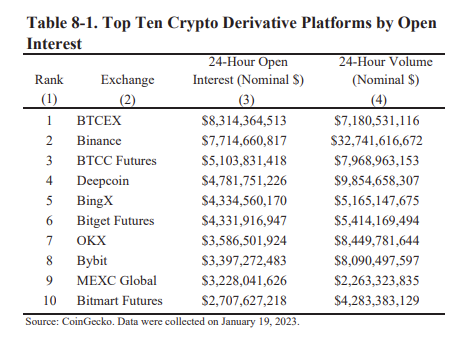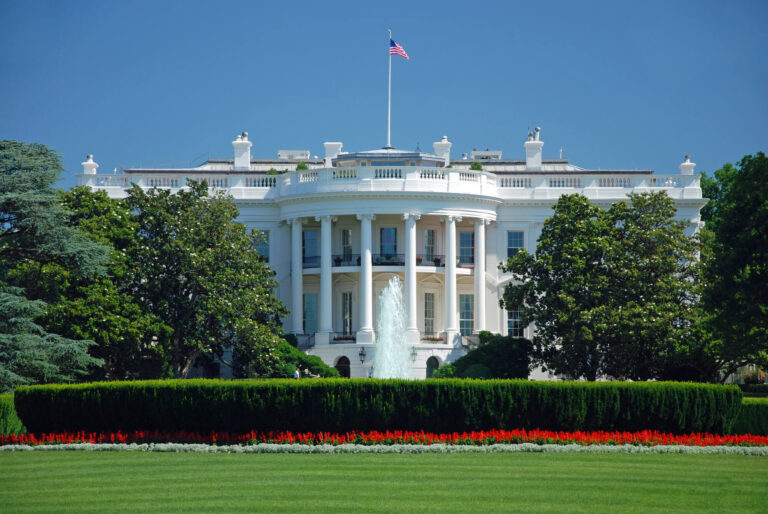The White House Economic Report for 2023 has put the spotlight on the rapidly evolving world of cryptocurrencies and blockchain technology. In doing so, the U.S. government takes a skeptical stance and highlights the perceived risks to the broader financial system.
One of the pressing issues addressed in the annual economic report of the incumbent US government is the use of cryptocurrencies for illegal activities. About 15% of the total program is just about the fast-growing industry. Money laundering, terrorist financing and tax evasion are acute problems, it said. The report warns that policymakers must remain vigilant to prevent such activities. A summary of the relevant points in the 513-page report.
Blockchain technology not particularly useful so far
DLT technology, on which blockchains are based among other things, was developed as a solution for secure transactions between parties that do not need to trust each other. However, according to the U.S. government, many of the DLT projects do not really use decentralization. Moreover, many companies have merely used the hype surrounding blockchain technology to boost their stock prices, he said. Prominent technologists are said to have noted that DLT is not particularly new or useful, as existing technologies can often solve the same problems more efficiently. Overall, they said, the economic benefits of DLT technology to date have been limited.
Nevertheless, the economic report acknowledges that blockchain technology has the potential to transform various sectors. The White House sees potential in healthcare, supply chain management, but also in the political election system. Policymakers should strike a balance between encouraging innovation and protecting against potential risks.
Climate protection as a central point of criticism
The United States has enacted domestic legislation to meet its own climate targets. CO2 emissions are to be reduced by 50% below 2005 levels by 2030 and reach zero by 2050. Mining cryptocurrencies may seem lucrative, but it comes with high environmental costs. Proof of work consumes huge amounts of energy that could have catastrophic effects on the environment, he said. According to the White House sources, crypto mining accounted for more than 2% of electricity consumption in the US in early 2022. This would be equivalent to the amount of electricity used to run all home computers or lighting in the country's households.
Globally, the situation is no better, he said. Bitcoin, the largest cryptocurrency by market capitalization, accounts for 0.42% of global electricity consumption, which is equivalent to the consumption of a medium-sized advanced economy. The proof-of-work consensus mechanism, consumed significant amounts of electricity. This also leads to noise pollution, as well as local air and water pollution, without benefiting communities. Mining cryptocurrencies thus poses a huge risk to the environment and should be taken with a grain of salt, he said. The report does not address the nuances of the mining-environment debate.
President Biden's latest budget proposal therefore proposed a new tax on electricity consumption for cryptocurrency mining. The tax would aim to address concerns about the environmental impact of cryptocurrency mining. If approved, the tax would be phased in over three years and would eventually amount to 30% of the electricity used for mining. However, it is important to note that the proposal is still subject to legislative approval and may change. As a highly competitive industry with low margins, a 30% tax would likely spell the end of the U.S. mining industry.
A systemic risk: stablecoins
Stablecoins are a type of cryptocurrency designed to maintain a fixed value. In doing so, according to the U.S. government, many stablecoins can be subject to "run risk" if too many holders want to redeem their coins. Even algorithmic stablecoins like TerraUSD are not immune to these risks, as the May 2022 crash demonstrated, he said. Stablecoins face challenges with many redemptions and there are consumer protection concerns, he said. Even though distributed ledger technology has potential for the financial system in general, stablecoins are currently too risky for widespread use, he said. The report does not mention that the largest stablecoins by market capitalization are backed by far more reserves than most U.S. banks.
However, the Biden Administration notes that stablecoins are becoming increasingly popular. Their estimates suggest that the market value of Stablecoins has exceeded $100 billion. A quick look at CoinGecko confirms this; there are currently around $130 billion worth of Stablecoins in circulation. According to the economic report, while stablecoins have the potential to reduce volatility and increase the usability of cryptocurrencies, the report tends to express concerns about their potential risks.
One of the main risks associated with stablecoins, it says, is the possibility that they will be used for illegal activities such as money laundering, terrorist financing, and tax evasion. The economic report suggests that policymakers should consider regulating stablecoins to ensure they are subject to the same anti-money laundering and counterterrorist financing laws as traditional financial institutions.
In addition, the economic report notes that stablecoins could pose a risk to financial stability if their value suddenly drops or there is a run on the stablecoin issuer. The government suggests that policymakers should carefully monitor the stablecoin market and consider measures to mitigate potential risks.
Digital Dollar (CBDC) not yet operational
The White House also addresses the issue of a central bank digital currencies (CBDC) in the report. A CBDC would be a digital version of the U.S. dollar issued by the Federal Reserve and backed by the government. Many central banks around the world are exploring the possibility of issuing CBDCs, and the Federal Reserve is also studying the potential benefits and risks of a digital dollar. One of the main benefits of a CBDC would be greater efficiency in payments and financial transactions, as well as a potential reduction in the cost of issuing and circulating physical money.
However, the report also acknowledges that there are potential risks and unresolved challenges associated with CBDC. One of the main concerns, it says, is the risk of cyberattacks, financial privacy, and other security risks that could even lead to financial losses or disruptions in the economy. In addition, a CBDC can have implications for financial stability, data privacy, and monetary policy. Therefore, the report suggests that the Federal Reserve carefully weigh the potential benefits and risks of a digital dollar CBDC and conduct further research and public consultation before making a decision.
FedNow as a precursor to a CBDC?
The Automated Clearinghouse (ACH) is the largest retail payment system in the U.S. (as of 2020). It allows funds to be transferred electronically between banks and other depository institutions, but only on business days and during business hours. Although ACH payments offer many benefits, it takes up to three business days to process funds. To meet the growing demand for faster payment systems, the Federal Reserve has developed the FedNow service, which is scheduled to launch during 2023.
Through participating financial institutions, businesses and individuals will be able to send and receive payments. In doing so, they will have near-instant access to funds, enabling time-sensitive payments and greater flexibility in managing money. The FedNow service will operate around the clock, he said, representing an improvement over existing payment systems. In addition to speed and convenience, the near-instant payment system could bring real economic benefits, especially to vulnerable populations that tend to be affected by slow payment systems.
However, achieving interoperability with other payment services will require active partnership and collaboration with the financial industry. The FedNow service is not a digital currency and will initially focus primarily on domestic payments, with limited enhancements to the cross-border payments system. Some market participants see FedNow as an alternative for stablecoins, which should serve as a bridging technology to advance the digital fiat dollar.
Cryptocurrencies as scapegoats
The economic report also discusses the history of financial crises in the United States. Crises were often caused by unregulated financial institutions such as trust companies and, according to the White House, led to the creation of the Federal Reserve. The authors do not see an acute problem; the current situation is primarily due to the aging of the working population. To all appearances, the Biden Administration takes an industry with 1.2 trillion. USD in total market capitalization as a greater risk to the financial industry than any of the banking scandals of the past decade.
Finally, the societal costs of crypto assets are significant and accrue in the present, it said. Cryptocurrencies do not offer investments with fundamental value and do not act as an effective alternative to fiat money, according to the economic report. The report raises questions about the role of regulation in protecting consumers, investors, and the financial system from panic, crashes, and fraud associated with crypto assets. While some potential benefits of digital assets may be realized in the future, the current state of crypto assets points to the need for strong regulation to protect the public interest, he said. The extensive expertise in this area is underscored by a chart on the highest-volume crypto exchanges according to the White House, which CVJ.CH editors will not comment on further.









